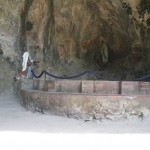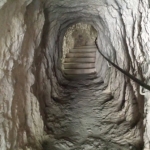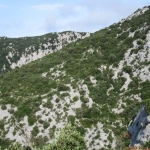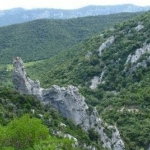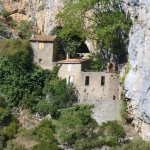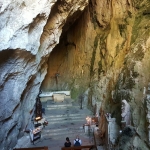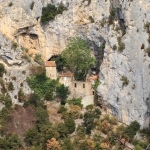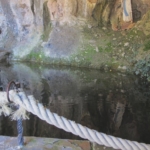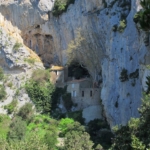Picture the gods cleaving the earth with a monstrous axe and you have the spectacular Gorges de Galamus. No wonder the pious have always been drawn there.
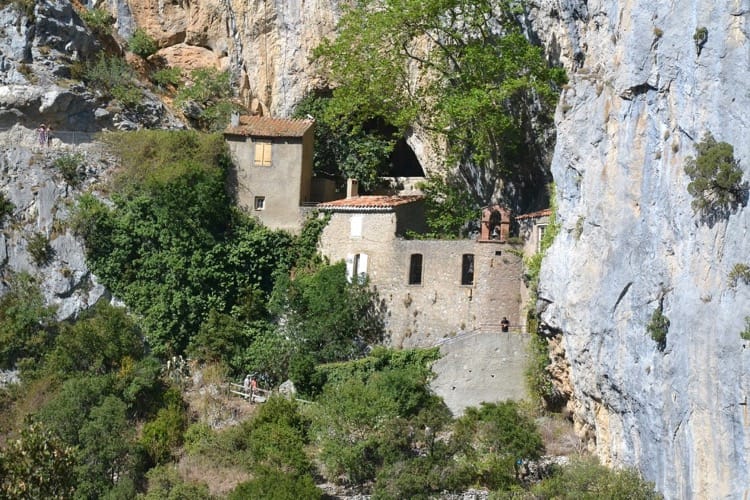
by Katja Willemsen
The glory for creating this spectacular passage goes to nature’s most patient sculptress, water, in the form of the Agly River.
Since time long gone, the pious have been drawn there, living in caves hewn out of cliffs the colour of old bones. Then in the seventh century, Franciscan monks arrived and squeezed a hermitage into a towering crevice that was only accessible by donkey trail. In 1880, intrepid workers abseiled down the rockface and carved out the road we know today, using little more than wrought-iron rods called barres à mines.
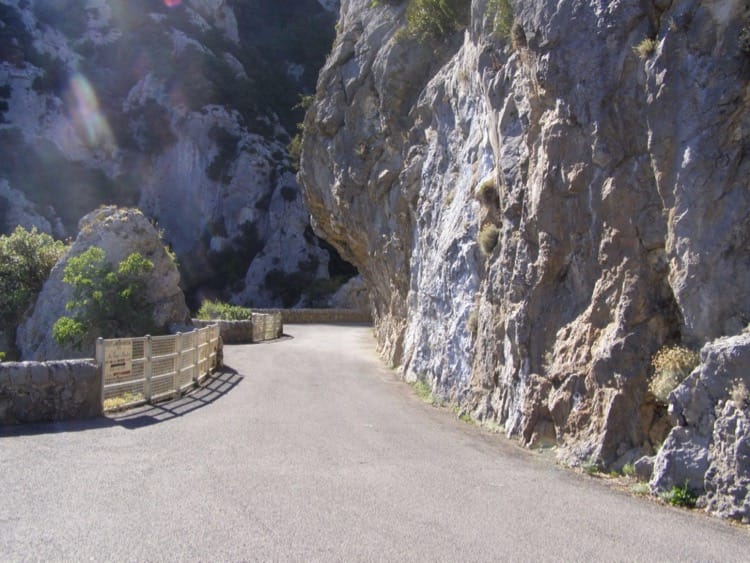
How to get there:
From St Paul de Fenouillet, follow signs to the Gorges de Galamus. (See inset for details) until the gorge swallows you and the road, drive on until you reach a spacious parking on the left, then hike down the path to the hermitage. The trail is steep, with gravel as slippery as marbles, so wear good shoes and take a stick if you’re unstable on your feet.
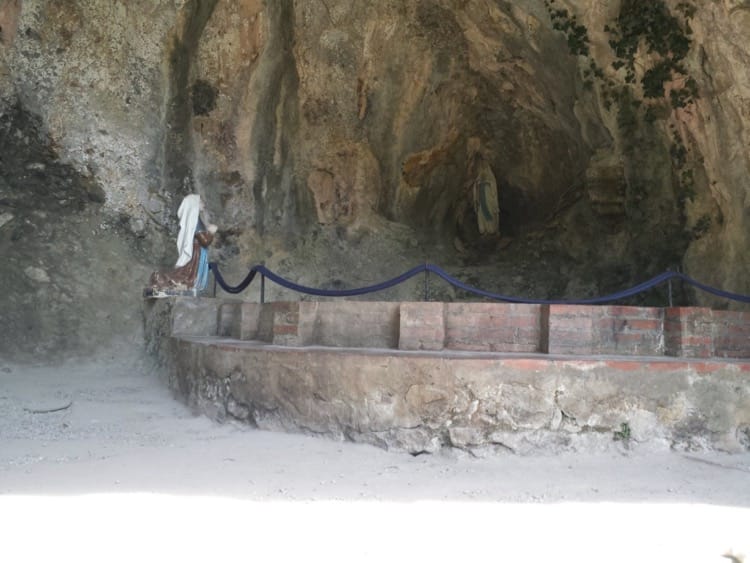
Ermitage de St Antoine
Mystique drifts like mist over the Ermitage de St Antoine. There are intriguing symbols, thought to be Mayan and Templar, etched into various surfaces, and no-one knows the origin of the magic square of words chiselled on the marble block in the main cave.
People whisper of a secret portal to a feared “other world” near Sainte Madeleine’s font. A man who ventured through in 1597, reappeared three days later, insane and on death’s door. His female companion was never seen again.
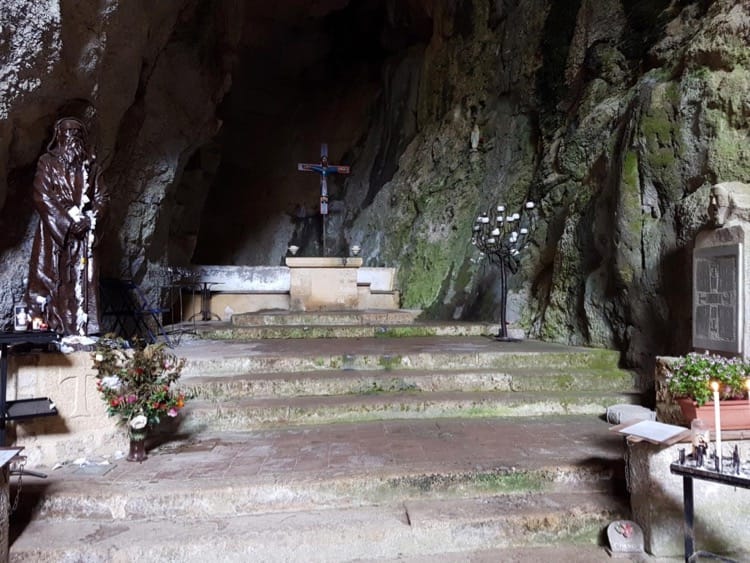
Chapel cave
After the miraculous end to a typhus epidemic in 1782, the womb-like cave behind the hermitage became a chapel. Water drips from stalactites, gleams over walls, and fills the font behind the cross. Worn benches and scraps of handwritten pleas to St Antoine are a poignant reminder that many still pray here. Listen closely and you might hear the beating of the mountain’s heart.
DID YOU KNOW
La suette miliaire arrived in the Languedoc Roussillon in the early 1780s. Already experienced in England and known as the English Sweat or sweating fever, the symptoms of this mysterious and contagious disease (intense sweating, often-fatal fever) were sudden, with death often occurring within hours. Treatment for this frightening virus ranged from ‘faire baisser la fièvre et réhydrater’ to ‘une succession d’émétiques (vomitifs), purgatifs (laxatifs) et lavements’ and ‘partir vite, loin et revenir tard’, the latter being the nearest equivalent to the present day ‘confinement’!

Its cause remains unknown
Stand in the shade of the courtyard’s 230-year-old plane tree and breathe in the view before you climb the steps to the cave where early hermits slept, now dedicated to Sainte Madeleine, and where you’ll find a basin of crystal clear water and a startlingly modern wooden sculpture.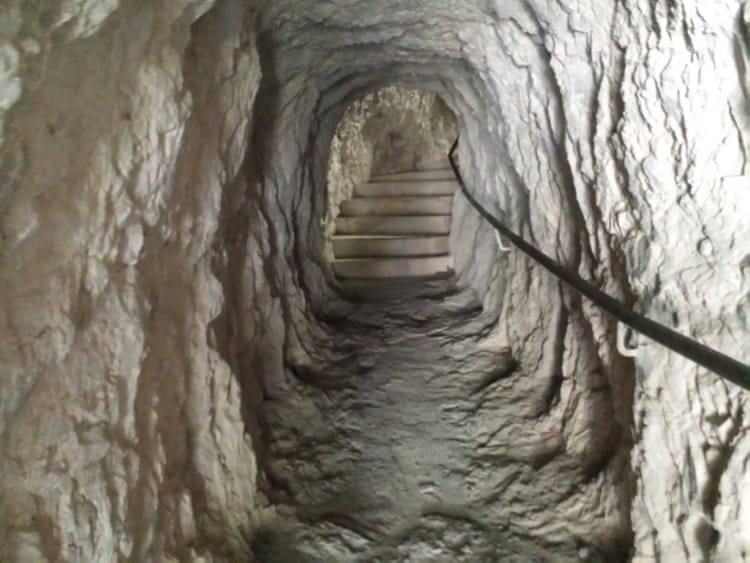 Stroll along the roadBefore you drive off, walk a stretch along the road and experience the full magnificence of the imperious cliffs that slice down to the turquoise waters of the Agly River.
Stroll along the roadBefore you drive off, walk a stretch along the road and experience the full magnificence of the imperious cliffs that slice down to the turquoise waters of the Agly River.


